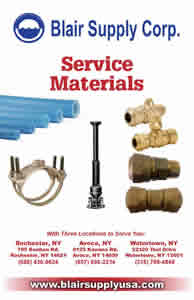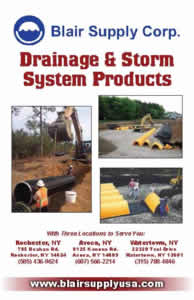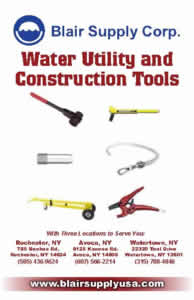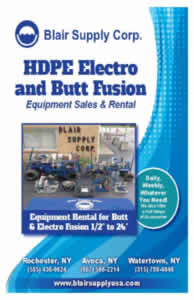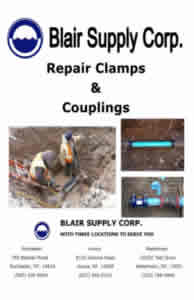Blog
Safety Equipment for Road Construction Workers
Road construction can be one of the most dangerous jobs and as such road workers need to be prepared with the correct personnel protection equipment (PPE). This equipment must be worn at all times when on road construction sites to ensure that the workers are not injured either by a fellow co-worker or a passing car.
At a minimum, each employee is required to wear a hard hat and a neon orange safety vest with reflective striping. All employees must also wear sturdy work shoes or boots when working. Depending on the working conditions and other hazards present, additional PPE may be required. This determination will by made by your supervisor or by the rules and regulations of the state.
Types of Protective Gloves
There are many types of gloves available to protect against a wide variety of dangers in the work environments. One of the most important things to consider when choosing a pair of gloves is the amount of dexterity needed to perform a particular task which must be weighed against the glove material recommended for maximum protection. In general, gloves are made out of one of five types of material: leather, rubber, canvas, cotton, or metal mesh gloves.
The glove thickness is usually measured in something called gauges. For example, a 10-gauge glove is 0.01 inches. Another consideration is glove length. If splashes are likely on the job site, a longer glove should be worn to prevent burns, cuts and bruises. Gloves longer than 14 inches usually provide extra protection against these types of splashes and chemical exposure.
All gloves should be inspected for signs of wear and tear or puncture before each use. Test for holes by blowing or trapping air inside and rolling them out. Disposable gloves should be discarded after every use or when there is any sign of contamination. Reusable gloves should be washed frequently if used for an extended period.
While wearing gloves, be careful not to handle anything except the recommended materials for that particular glove style. For example, do not handle dangerous chemicals with cotton cloves. If you’re unsure about a particular use for a glove, please ask your supervisor.
Before removing the gloves at the end of a workday or for a break, wash the outside of the glove. To avoid accidental skin exposure to dangerous chemicals or sharp objects, remove the first glove by peeling the glove off the hand so that the glove finishes inside out. Wash hands immediately with soap and water.
Types of Eye Protection
Eyes are at risk of injury at any construction job site, and eye protection should be worn to reduce the chances of an object damaging the eye. Some of the most common types of eye and face protection include:
Safety glasses which have safety frames made of metal or plastic and are impact-resistant lenses. Side protection is also usually required.
Chemical Splash Goggles are fitted eye protection that completely covers the eyes, eye sockets and facial area surrounding the eyes. These type of goggles provides protection not only from chemicals but from impact, dust and splashes.
Fluid Resistant Glass Shields need to be worn to protect a workers’ face against fluids and provide splash protection from chemicals and biological material.
Face Shields extend from the eyebrows to below the chin and cross the width of the employee’s head for an all encompassing protection. Face shields also protect against potential splashes or sprays of hazardous liquids. When worn for protection against sunlight and UV light, they must be specifically designed to protect the face and eyes from hazardous radiation. Check the box or with your supervisor for the exact specifications.
Welding Shields are popular and are usually constructed with fiberglass and fitted with a filtered lens or film, which protects the eyes from burns caused by infrared or intense radiant light. They are primarily used to protect both the eyes and the face from flying sparks, metal splatter and slag chips produced during welding, brazing, soldering and other cutting operations.
Types of Hearing Protection
When there is noise from a machine, vehicle, or general road noise, hearing protection must be worn. There are several options for hearing protection available that include the basic ear plugs, ear muffs, up to hearing bands. Each should be carefully considered for the noise reduction they will provide, but also for comfort and fit. While hearing cancelation is important, the person wearing the protection should still be able to hear dangers such as passing vehicles and hear communication from co-workers.
The difference between the four different types of ear protection are:
Pre-molded Ear Plugs come in different sizes and shapes to fit different sized ear canals. While they are cheap and expendable, they have virtually no expansion or contraction, so obtaining a good seal with the ear canal may be challenging.
Foam Ear Plugs will expand to fill the ear canal and seal against the walls. This expansion allows foam ear plugs to fit ear canals of different sizes.
Ear Muffs fit against the head and enclose the entire perimeter of the external ear. The inside of the muff cup is lined with foam, which reduces noise. Their effectiveness depends on the wear and tear of the foam insulation and how tight the seal is between the foam and the head.
Hearing Bands cover the ear canal at its opening. They do not provide as much of a seal inside the ear canal and generally provide less protection than ear muffs or plugs, so they are typically not recommended.
Miscellaneous Protection
When work is performed on a platform or other elevated surface that is a minimum of six feet above the ground in a construction site, workers must be prevented from falling. Fall arresting systems such as lifelines, body harnesses, and other associated equipment, are often used when fall hazards cannot be controlled by railings or other safety methods. These types of fall arresting systems are especially good for when working with or on high buildings such as skyscrapers.
Call Blair Supply today and we can get you a quote on any safety equipment you need. We can outfit you and your crew for any road construction or similar job!

